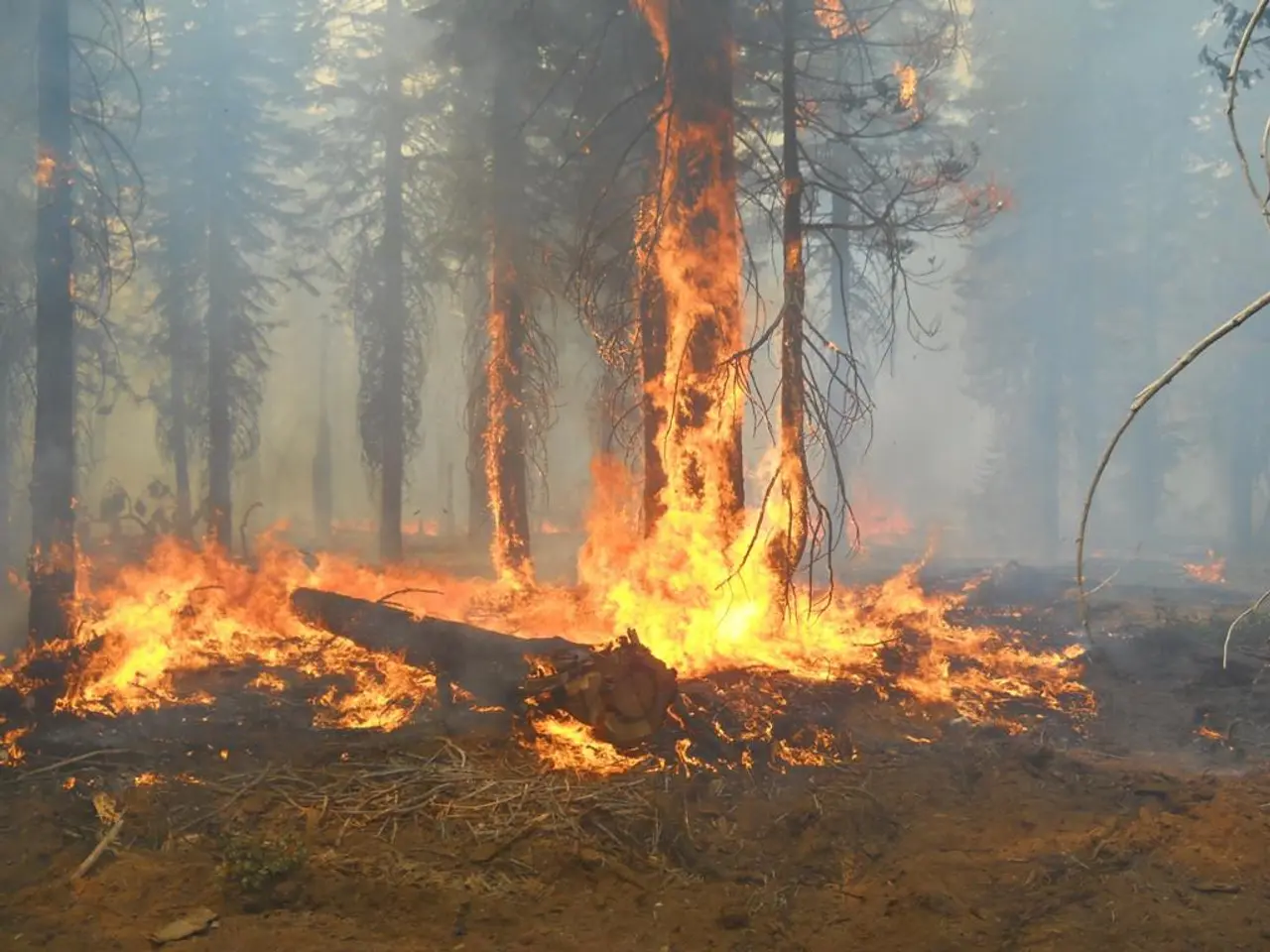Airstrike Delivery Disaster: Plane Drops Aid Pallets Over Stricken Gaza Strip
In the skies above Gaza Strip, August 1st, 2025, a French plane moved at high speed, its view a stark image of desolation. The once bustling white city, now reduced to rows of buildings with vague, unequal forms, was a poignant reminder of the devastation that had befallen the region.
Yellowish tracks separated the remaining buildings, wide strips resembling enormous scars running from the sea, marking the path of destruction. A large round square in the city appeared to have been plowed, a large round crater perhaps, a testament to the intensity of the conflict.
Amidst this desolation, a single red roof stood out among the dark gray mass, a symbol of resilience amidst the ruin. Makeshift shelters covered the beaches, a stark contrast to the empty fields and scattered buildings that surrounded them.
The plane carried large packages loaded with milk and other essential humanitarian aid, part of an international effort to provide critical assistance amidst the ongoing conflict and widespread civilian suffering in Gaza.
This aerial observation and air drops were conducted by the Jordanian army in coordination with international air forces, aiming to address the severe humanitarian crisis in the region. The crisis, characterised by severe food shortages and acute malnutrition, had led to warnings from international bodies about a looming famine scenario.
Just days before, on July 29th, the Integrated Food Security Phase Classification (IPC) had issued warnings about a "worst-case scenario of famine" unfolding in Gaza, highlighting widespread starvation, malnutrition, and hunger-related deaths.
The situation on the ground is extremely dangerous for Palestinian civilians seeking aid. Israeli forces have been reported to open fire on Palestinians trying to reach aid distribution points, which are heavily militarized and crowded. The military presence includes armored vehicles, tanks, and Quick Reaction Force staging areas near aid routes.
Communication and infrastructure in Gaza have been severely disrupted by Israeli military actions, affecting Palestinians' access to information about aid operations. This disruption, coupled with the ongoing conflict, has made the delivery of humanitarian aid a critical and urgent matter.
The aerial observation and air drops on August 1st were part of a broader international effort to provide critical food and humanitarian assistance amid intense conflict and widespread civilian suffering in Gaza. The conflict, which began with Hamas attacks on Israel in October 2023, has resulted in the deaths of over 18,000 Palestinian children, underscoring the extreme human toll of the conflict.
- The environmental-science community is raising concerns about the long-term impact of the war-and-conflicts in the Gaza Strip on the region's climate, given the extensive destruction of buildings and infrastructure.
- Despite the political tensions, the issue of climate-change has found a bipartisan consensus among global leaders, with many acknowledging the need for immediate action to mitigate the effects of the ongoing conflict on the environment.
- General-news outlets are reporting increased discussion about the role of science and technology in the resolution of war-and-conflicts, with some suggesting that technological advancements in fields like environmental-science could potentially aid in peace-building efforts.








